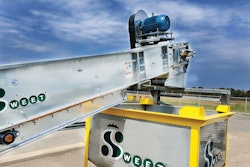
Turbulence, disruption and innovation are all terms we use daily in today’s agribusiness environment, and navigating these times is challenging to say the least. Many feed and grain managers seek answers to questions centered around market volatility, customer and consumer expectations, policy shifts and regulations, technology advancements and more.
While looking at the longer term, you also have to run your business for today — dealing with everything it takes to help your feed and grain business thrive in the here and now.
One approach is creating alliances to “join forces” and help identify and capitalize on longer-term opportunities and address longer-term threats, especially opportunities/threats where the risk of going it alone is prohibitive.
Of course, strategic alliances — even among competitors — in the feed and grain industries are not new. This form of cooperation, however, may open up even more possibilities in today’s environment and be more relevant as a strategy. As a result, industry managers may be more interested in considering these vehicles for collaboration.
The idea of strategic alliances between competitors is explored in a recent research paper published in the “Journal of Business Research” by Pelin Bicen, Shelby Hunt, and Sreedhar Madhavaram. The paper looks specifically at strategic alliances or partnerships between competitors or “coopetitive alliances.”
This is an idea many of us may be reticent to consider during normal times. But these times are anything but normal and call for us to be bold and original in our thinking.
The coopetitive alliance
Perhaps there are opportunities to navigate the changing landscape of food and agriculture by building a coopetitive alliance like those evaluated in this research paper?
The authors found these alliances are quite common in the biotechnology, semiconductor, medical device, hardware, electronics and chemical industries. They argue the high pace of innovation, competition and growth in these industries leads natural to coopetitive alliances.
听起来很全家,所有这些特征liar to a manager in today’s food and agriculture industry.
What are the most important factors to think through if considering a coopetitive alliance? The research points out the most critical success factors are centered on clarifying the market orientation of the alliance. The authors provide compelling evidence that competitors can succeed in an alliance if the focus is on creating a new and unique value proposition for customers. The alliance should be oriented toward the market rather than focused on basic research or efficiencies.
This idea counters some conventional wisdom about strategic alliances. Most of us likely jump to operational efficiencies or joint research as the primary driver of an alliance — some kinds of joint purchasing arrangements or university-based research consortia with several competitors providing funding to address challenges common to all come to mind.
The article challenges us to think about how competitors can work together to create new customer value, build trust and commitment in the alliance, yet still compete.
Often, firms that engaged in successful coopetitive alliances with a clear focus on creating new value propositions do so in response to a competitive threat, either from another competitor in the industry or an emerging competitor from another industry.
When the catalyst to have this market orientation is there, it creates a “shared destiny” mentality that reinforces trust and commitment, thereby strengthening the relational contract between the alliance partners and leading to stronger outcomes from the alliance. With values and objectives aligned – from either a shared opportunity or shared threat — the foundation for a successful relationship is in place.
One example of as a coopetitive alliance in the agricultural input supply industry is the formation of CommoditAg. CommoditAg is an alliance of several regional cooperative retail organizations that, at times, compete with each other but, in this case, have chosen to collaborate in response to the growing pressure from e-commerce in the agricultural retail space.
Some may quibble about CommoditAg being a true coopetitive alliance, but it seems it has many of the essential elements.
Research would suggest that CommoditAg is most likely to be successful. As long as it can stay focused on creating a unique value proposition for farmer customers, respond effectively to the changing competitive environment of e-commerce, and effectively coordinate the resources of its parent members to deliver on their unique value proposition.
You will see many other opportunities and variations on this idea. Perhaps some co-located facility might provide an opportunity for a coopetitive alliance. Perhaps a service-sharing arrangement would allow the alliance to serve customers that bridge multiple organizations given the customer’s scale of operations.
Or, something like a ‘Star Alliance’ operated by airlines that link routes and frequent flyer programs to serve their customers better might be possible.
Coopetitive alliance firms might creatively share technical services — perhaps a jointly hired nutrition specialist to serve a region where neither firm could justify the full investment.
Of course, anti-trust laws must be followed, and any areas that might involve anti-competitive practices would need to be avoided, especially pricing issues.
New opportunities
We spend most days trying to deliver our current value proposition and beat out our competitors. Yet, today’s volatile marketplace might suggest opportunities to collaborate with our competition in creative new ways.
As you consider this approach to deal with some of your bigger challenges, are you open to considering opportunities to partner in ways that create unique value in the marketplace, or are you more comfortable sticking to traditional collaborations focused on operational efficiencies?
This is a question savvy feed and grain managers should be asking.
This article is adapted from an earlier version of the same title published in theCenter for Food and Agricultural Business Quarterly Review(June 23, 2021):bit.ly/3l5ZUqf





















